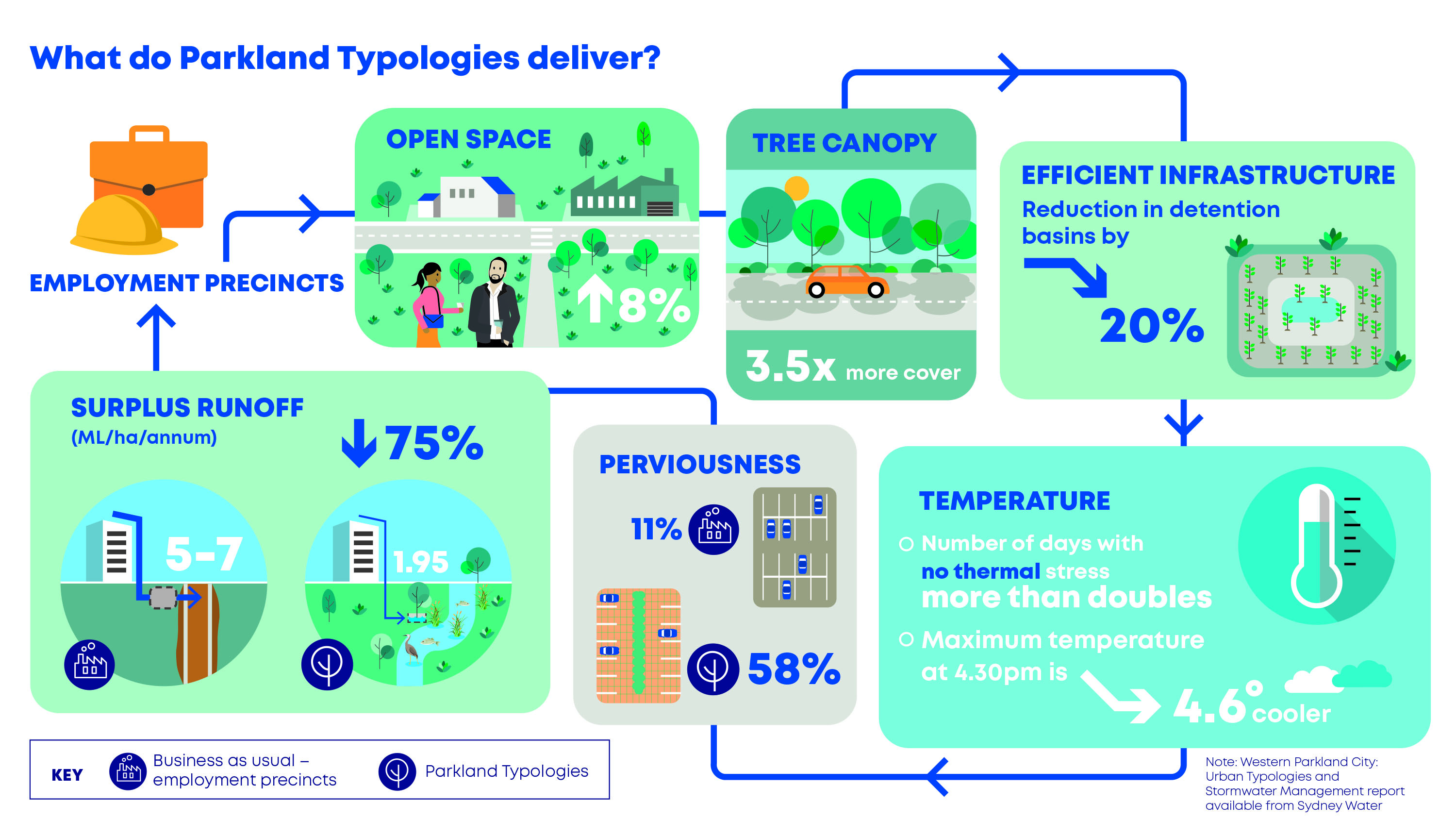Plans to cool down Western Sydney

A newly released report demonstrates that innovative design and planning can reduce temperatures in Sydney’s Western Parkland City by up to 4.6 degrees.
Conducted by Sydney Water, in partnership with leading architects, engineers and urban designers, the Urban Typology and Stormwater Management report shows that retaining stormwater in the natural landscape, coupled with innovative planning designs, permeable surfaces and irrigating street trees, can achieve great livability outcomes.
“Through innovative streetscape design and stormwater capture, we can significantly reduce the impact of hot, dry weather on our natural landscapes and built infrastructure,” Minister for Water, Property and Housing Melinda Pavey said.
“The Urban Typologies and Stormwater Management report demonstrates the smart planning techniques that will guide development across Western Sydney and help reduce the urban heat island effects.”
Sydney Water Managing Director Roch Cheroux said the report was commissioned to help influence the design of buildings, open spaces, streetscapes and green corridors to deliver a true Parkland City, in what is currently one of the hottest and driest parts of Greater Sydney.
“Applying cooling actions such as permeable surfaces, tree planting, vegetation and irrigation will help to cool down Western Sydney, with modelling showing the number of extreme, very strong and strong heat-stress days per summer decreases dramatically from 47 to 19 days.
“Adopting the best practice urban typologies and integrating watercycle management into the earliest stages of strategic land-use planning promises fantastic benefits to workers and residents, improves the health of our waterways and supports the economic vibrancy and competitiveness of our city,” Cheroux said.
Architectus Project Leader Oscar Stanish said the project identifies new benchmarks for the integration of urban design, planning and sustainable stormwater management.
“Its implementation will achieve the NSW Government’s objectives of a cool, green and sustainable Western Parkland City,” Stanish said.
Bligh Tanner Project Lead Alan Hoban commented, “This is the first time in Australia that a new city is being designed to deal with the challenges of future climates.”
Bürkert team to take on sustainability strategies
The fluidics experts at Bürkert have assembled a global, interdisciplinary team that...
ASC certifies NT barramundi farm
Aquaculture Stewardship Council has announced that Humpty Doo Barramundi, based in the Northern...
ARBS 2026 returns to Melbourne in May
Registration has opened for ARBS 2026, an Australian exhibition for the air conditioning,...











